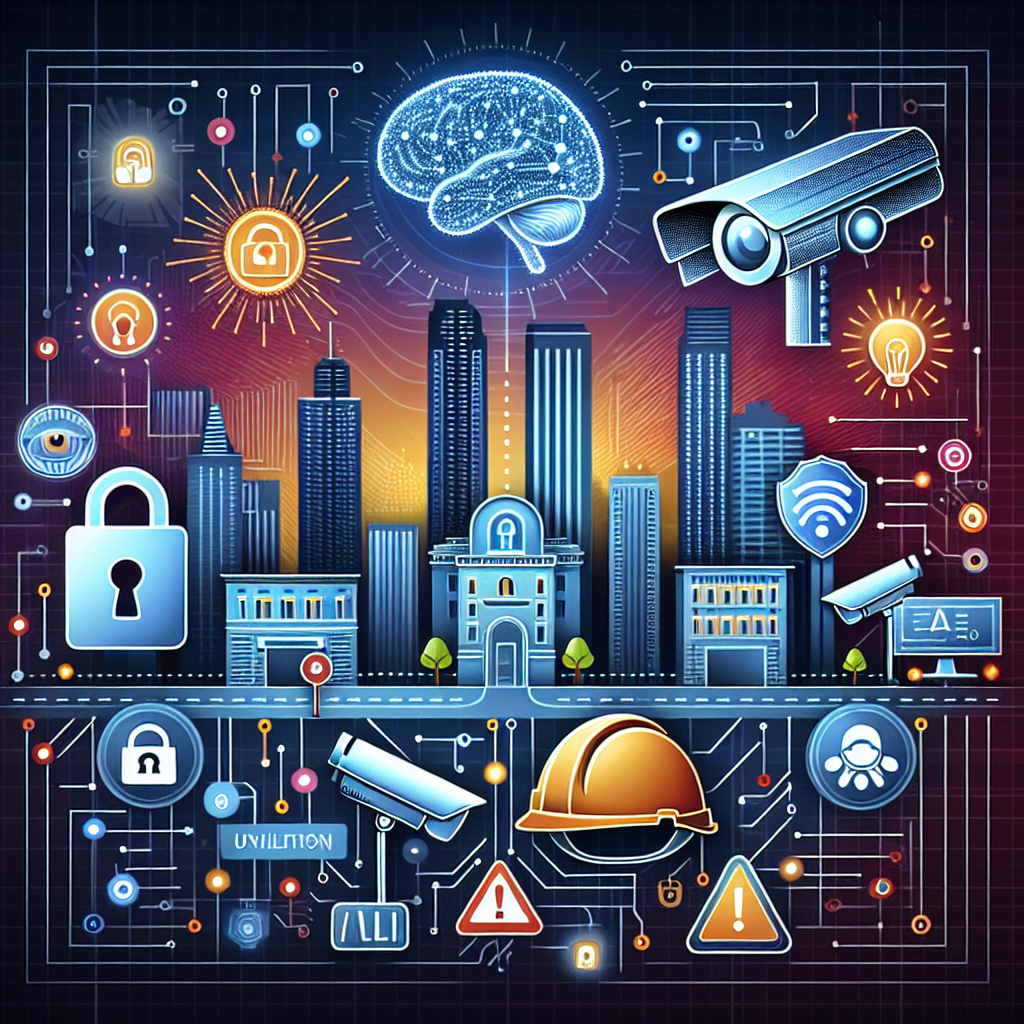In recent years, there has been a growing interest in using artificial intelligence (AI) tools to enhance public safety and security. From predictive policing to facial recognition technology, AI has the potential to revolutionize how we protect our communities. In this article, we will explore the benefits and challenges of implementing AI tools for improving public safety and security.
Benefits of Implementing AI Tools for Public Safety and Security
1. Predictive Policing: One of the most significant benefits of using AI in public safety is its ability to predict and prevent crime. By analyzing historical crime data, AI algorithms can identify patterns and trends that can help law enforcement agencies allocate resources more effectively. This can lead to a more proactive approach to policing and ultimately reduce crime rates.
2. Facial Recognition Technology: Another powerful tool in the fight against crime is facial recognition technology. AI algorithms can analyze video footage and match faces to a database of known criminals, missing persons, or other individuals of interest. This can help law enforcement agencies quickly identify suspects and solve crimes faster.
3. Real-time Monitoring: AI tools can also be used to monitor public spaces in real-time, detecting unusual behavior or suspicious activities. For example, AI-powered video analytics can alert authorities to potential threats, such as unattended bags or individuals acting erratically. This can help prevent acts of terrorism or other violent incidents.
4. Disaster Response: In addition to crime prevention, AI can also be used to improve disaster response efforts. By analyzing data from social media, news reports, and other sources, AI algorithms can help emergency responders identify areas in need of assistance and allocate resources more efficiently. This can save lives and reduce the impact of natural disasters.
Challenges of Implementing AI Tools for Public Safety and Security
1. Privacy Concerns: One of the biggest challenges of using AI in public safety is the potential for invasion of privacy. Facial recognition technology, in particular, has raised concerns about the collection and storage of biometric data without consent. It is essential for policymakers to establish clear guidelines and regulations to protect individuals’ privacy rights while using AI tools for public safety.
2. Bias and Discrimination: AI algorithms are only as good as the data they are trained on. If the training data is biased or incomplete, the AI system can perpetuate discrimination and inequality. For example, facial recognition technology has been shown to have higher error rates for people of color, leading to false identifications and wrongful arrests. It is crucial for developers to address bias in AI systems and ensure they are fair and equitable for all individuals.
3. Reliability and Accuracy: Another challenge of implementing AI tools for public safety is ensuring the reliability and accuracy of the algorithms. AI systems can make mistakes or misinterpret data, leading to false alarms or missed opportunities. It is essential for law enforcement agencies to carefully evaluate the performance of AI tools and provide proper training to personnel using them.
4. Ethical Considerations: As AI technology becomes more advanced, it raises ethical questions about how it should be used in public safety and security. For example, should AI be used to make decisions about who to surveil or arrest? How can we ensure that AI systems are transparent and accountable? These ethical considerations must be addressed to build public trust in AI tools for public safety.
Frequently Asked Questions (FAQs)
Q: How can AI help prevent crime in my community?
A: AI can help prevent crime by analyzing historical crime data to identify patterns and trends. This information can help law enforcement agencies allocate resources more effectively and take a proactive approach to policing.
Q: Is facial recognition technology accurate?
A: Facial recognition technology can be accurate, but it is not foolproof. Factors such as lighting, angle, and image quality can affect the accuracy of facial recognition algorithms. It is essential for law enforcement agencies to use facial recognition technology responsibly and in conjunction with other investigative tools.
Q: How can AI improve disaster response efforts?
A: AI can improve disaster response efforts by analyzing data from various sources to identify areas in need of assistance and allocate resources more efficiently. By providing real-time information to emergency responders, AI can help save lives and reduce the impact of natural disasters.
Q: What steps are being taken to address bias in AI systems?
A: Developers are taking steps to address bias in AI systems by ensuring diverse and representative training data, conducting bias audits of algorithms, and implementing fairness metrics to evaluate performance. It is essential for developers to be proactive in addressing bias to build fair and equitable AI systems.
Q: How can policymakers protect individuals’ privacy rights while using AI for public safety?
A: Policymakers can protect individuals’ privacy rights by establishing clear guidelines and regulations for the collection and storage of biometric data, implementing data protection measures, and ensuring transparency and accountability in the use of AI tools for public safety.
In conclusion, implementing AI tools for improving public safety and security has the potential to revolutionize how we protect our communities. From predictive policing to facial recognition technology, AI can help law enforcement agencies prevent crime, respond to disasters, and enhance overall public safety. However, there are challenges that must be addressed, such as privacy concerns, bias and discrimination, reliability and accuracy, and ethical considerations. By addressing these challenges and working together to build fair and equitable AI systems, we can harness the power of AI to create safer and more secure communities for all.

